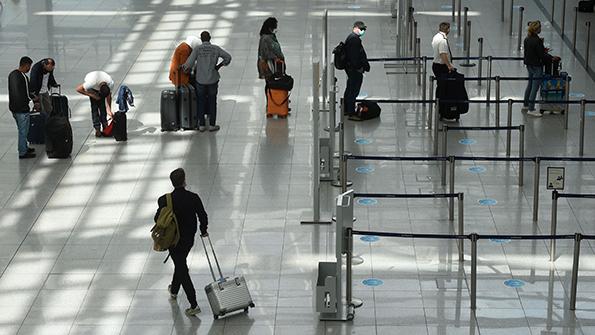
Ask the Editors: The Aviation Week Network invites our readers to submit questions to our editors and analysts. We’ll answer them, and if we can’t we’ll reach out to our wide network of experts for advice.
How does limiting carry-on size help fight COVID-19? Forcing passengers to check their bags will only increase crowding at airport bag drop and collection areas, exacerbating the risk of viral transmission. And how does taking a bigger bag on board raise the risk of transmission? It looks like the only rational aim of further limiting the size of carry-on bags is to extract money from passengers in the form of hidden costs.
Air Transport World Editor-in-Chief Karen Walker responds:
I agree that limiting the size of carry-on bags is nonsense. Let’s start with an important point: When the International Civil Aviation Organization (ICAO) issued its hygiene safety guidelines on June 12 for air travel, it did not include restrictions on carry-on bags. The International Air Transport Association (IATA), which helped draw up the guidelines and supports them, has not recommended carry-on bag restrictions.
The ICAO guidelines recommend physical distancing to the extent practical, wearing of face coverings by passengers and crew and regular sanitation and disinfection of common touch points and all areas where people might gather. All that makes sense and adds up to what IATA calls a “layered measures” approach. That, combined with the hospital-grade HEPA filters onboard every modern airliner, is reasonably practical and minimizes risk for passengers and aviation employees.
So why are some airlines and a few countries issuing rules about onboard baggage? I asked that question to Tony Tyler, former IATA director general and ex-Cathay Pacific CEO, during Aviation Week’s June 16 Air Transport webinar, and he was baffled. He agreed that it makes no sense to force people to wait for bag check-in and again at bag carousels when they don’t need to. If everyone must check a bag, those wait times and contact points will be longer and more crowded. Worse, some passengers will perceive this as a way of airlines forcing them to pay for checked bags; others will simply put off air travel until they can keep their carry-on bags with them.
So why might an airline think this a good idea? Airlines may be concerned about crowding in cabin aisles as people load and offload their carry-on bags in the overhead bins. Carriers also may be concerned about wheeled baggage bringing in germs from streets, parking lots and airport floors. They may want to avoid the cost and time of disinfecting overhead bins.
But the ICAO guidelines took advice from medical experts. The best practice would be for governments and airlines to adopt those guidelines, and only those guidelines, to provide a harmonized hygiene set of rules for all. Passengers will then understand the rules and not encounter different practices by different airlines and countries, which causes confusion and delays and undermines the message about what is safe.
